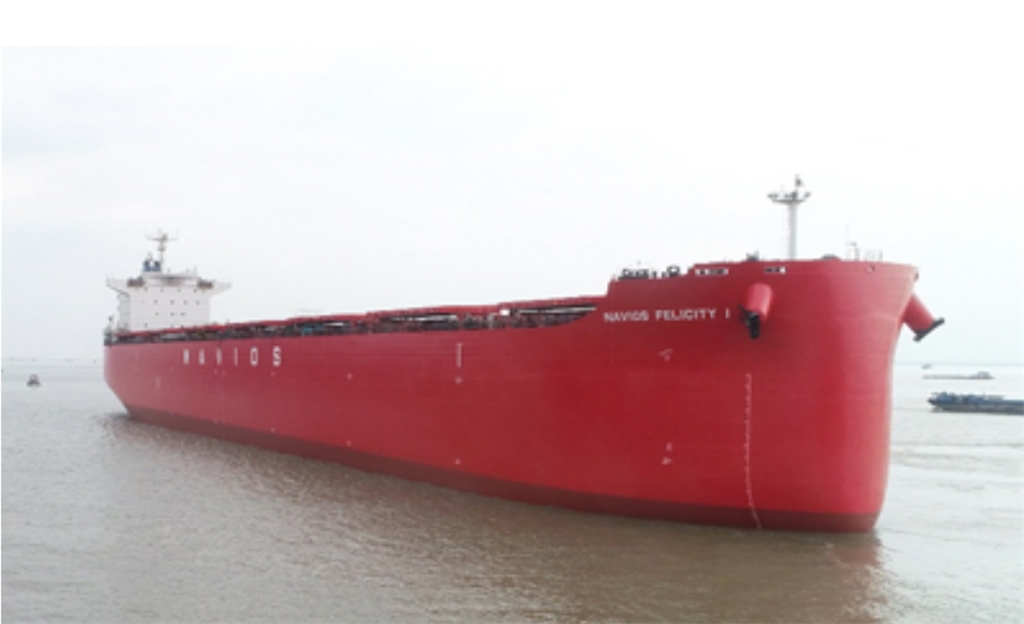Kawasaki Heavy Industries, Ltd. announced today that it delivered the bulk carrier NAVIOS FELICITY Ⅰ.
The vessel is with a capacity of 81,000 DWT (Kawasaki hull No. 8042, NACKS hull No. NE292 ), built for LEPTA SHIPPING CO.,LTD.( at the Nantong COSCO KHI Ship Engineering Co., Ltd. (NACKS), which is located in Nantong City, China and operated jointly with China COSCO Shipping Corporation Limited (China COSCO Shipping).

This is the Seventh vessel of Kawasaki and NACKS’s developed 81,000 DWT bulk carrier.
Delivery, principal particulars, and features of the vessel are as described below:
Principal Particulars:
| Length overall | 228.90 m |
| Length between perpendiculars | 226.00 m |
| Molded breadth | 20.20 m |
| Molded depth | 14.50 m |
| Molded draft | 44,120 |
| Gross tonnage | 81,962 t |
| Deadweight | 81,962 t |
| Hold capacity | 97,744 m3 |
| Main engine | One set of MAN B&W 6S60ME-C8.5 diesel engine Maximum continuous output: 9,670 kW at 89 rpm |
| Speed | Approx. 14.2 kn |
| Complement | 25 people |
| Classification | Nippon Kaiji Kyokai (ClassNK) |
| Country of registration | Panama |
- The vessel has a flush deck with a forecastle and seven holds that are designed for optimum transport of grains, coal and ores.
- The vessel employs various technologies to achieve maximum fuel economy, including an energy-saving, electronically-controlled main diesel engine, a bow designed to reduce wave resistance, high propulsive efficiency propellers, and the Kawasaki rudder bulb system with fins (RBS-F) and semi-duct system with contra fins (SDS-F), which all contribute to the vessel’s enhanced propulsion performance.
- The vessel incorporates various energy saving technologies, which reduce both fuel consumption and emission of carbon dioxide (CO2), thereby complying with the EEDI* Phase 2 requirements.
* Energy Efficiency Design Index (EEDI). An amendment to Annex VI of the International Convention for the Prevention of Pollution from Ships (“MARPOL,” one of the IMO treaties), became effective from January 2013, requires new ships to meet energy-efficiency levels based on the EEDI, an indicator of the amount of CO2 (in grams) emitted per metric ton of freight and per nautical mile of transportation. The energy efficiency requirement is tightened incrementally from Phase 0 to Phase 3, with the baseline being determined by the dates that the ship was contracted and/or delivered. By Phase 2, bulk carriers are required to achieve a 20% reduction in CO2 emissions.